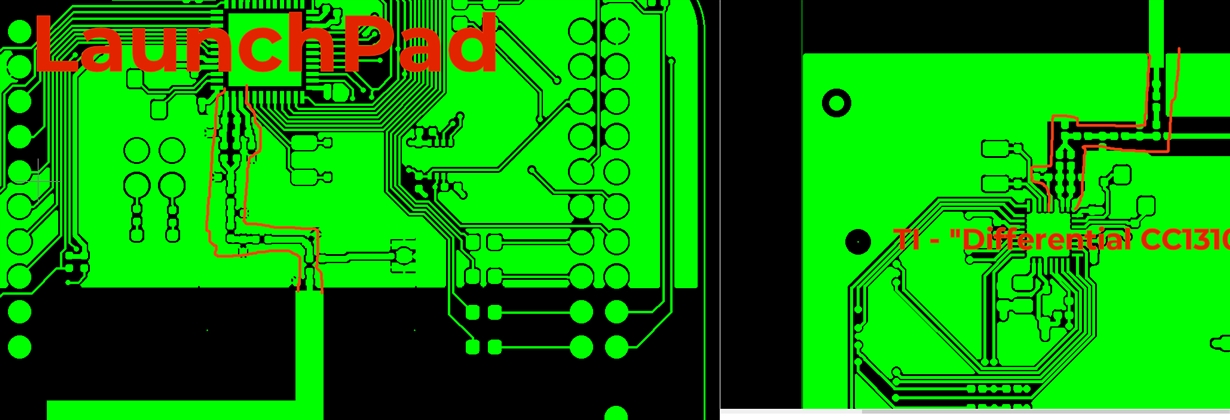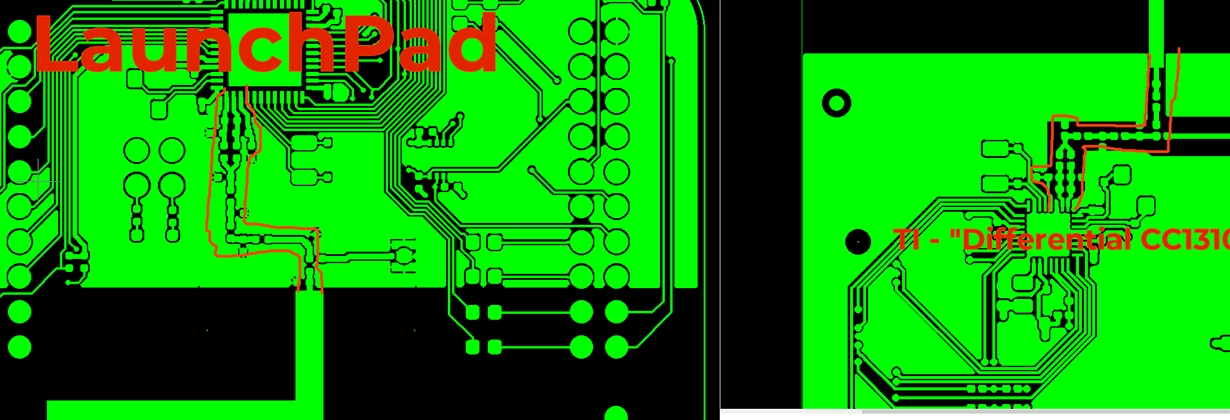Hi,
I've laid out plenty of single end 50 ohm traces for RF systems.I can calculate the impedance of my traces based on my board stack-up.
I have not laid out a system with these multiple lines that get impedance transformed in the balun.
(I'm basing this question on the LAUNCHCL-CC1310 REV 1.3.0 schematic component names).
What is the strategy here for runing the RF_P, RF_N, and RF-TX lines?
What impedance of the traces as they run from the IC and go through L22, L23, C21, C22, L12, and C11?
After that transformation, what should the trace impedance be through C12, L13, C13, L14, C14, and C15?
I'm guessing after the two network, ostensibly the signal is now 50ohms?
(I'm going to put one PI network in front of our final antenna for VNA testing on prototype boards for final tuning).
---
On the LaunchXXL-CC1310 layout, I see the traces begin at ~0.31mm, and then change to ~0.41mm after the balun. What is going on there just in terms of the impedance transformation?
What impedance is the 0.31mm section? What impedance is the 0.41mm traces suppose to be? (I can adjust our trace width to match the impedance, etc.).
Thanks,





